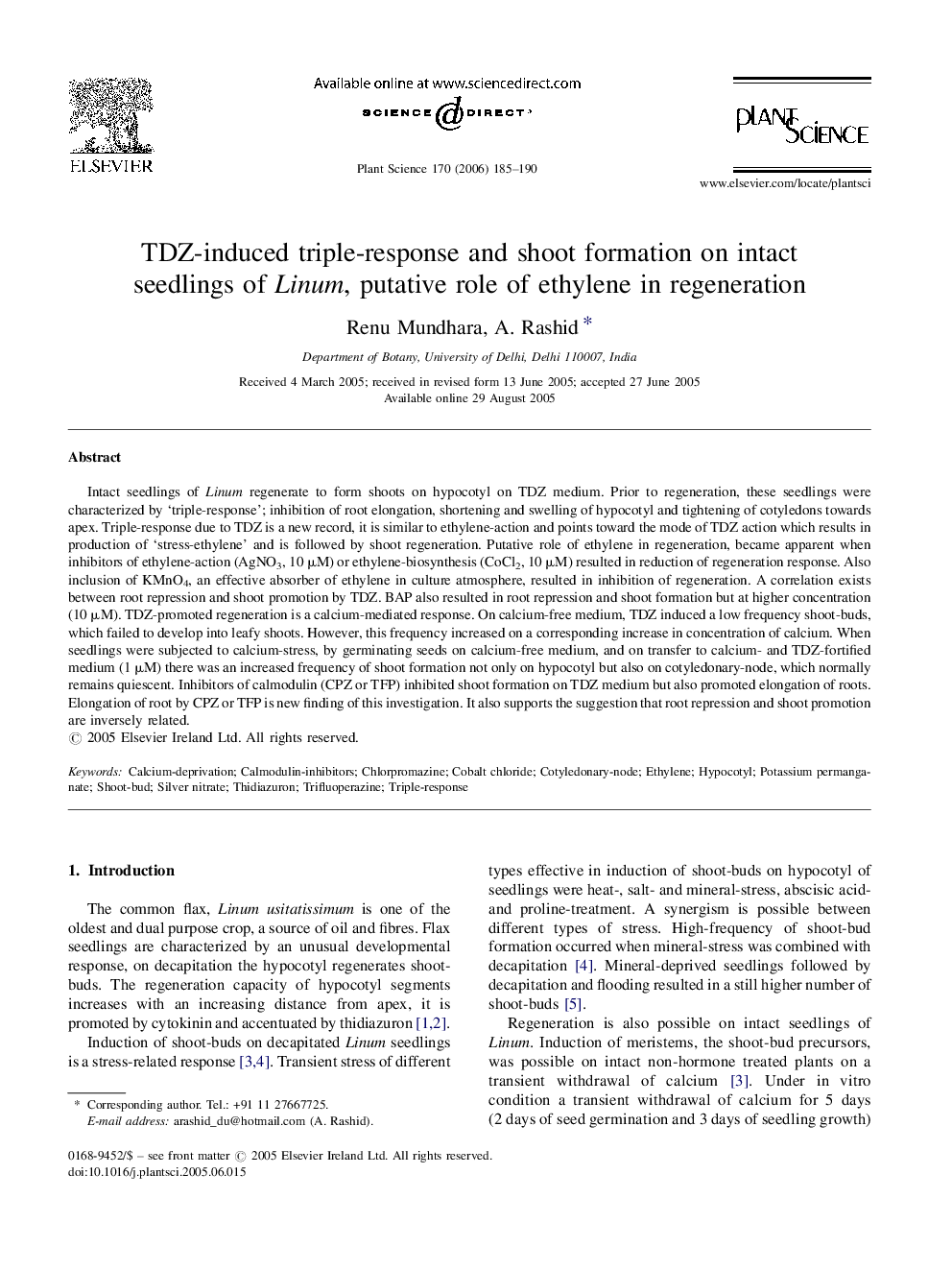| Article ID | Journal | Published Year | Pages | File Type |
|---|---|---|---|---|
| 2018616 | Plant Science | 2006 | 6 Pages |
Intact seedlings of Linum regenerate to form shoots on hypocotyl on TDZ medium. Prior to regeneration, these seedlings were characterized by ‘triple-response’; inhibition of root elongation, shortening and swelling of hypocotyl and tightening of cotyledons towards apex. Triple-response due to TDZ is a new record, it is similar to ethylene-action and points toward the mode of TDZ action which results in production of ‘stress-ethylene’ and is followed by shoot regeneration. Putative role of ethylene in regeneration, became apparent when inhibitors of ethylene-action (AgNO3, 10 μM) or ethylene-biosynthesis (CoCl2, 10 μM) resulted in reduction of regeneration response. Also inclusion of KMnO4, an effective absorber of ethylene in culture atmosphere, resulted in inhibition of regeneration. A correlation exists between root repression and shoot promotion by TDZ. BAP also resulted in root repression and shoot formation but at higher concentration (10 μM). TDZ-promoted regeneration is a calcium-mediated response. On calcium-free medium, TDZ induced a low frequency shoot-buds, which failed to develop into leafy shoots. However, this frequency increased on a corresponding increase in concentration of calcium. When seedlings were subjected to calcium-stress, by germinating seeds on calcium-free medium, and on transfer to calcium- and TDZ-fortified medium (1 μM) there was an increased frequency of shoot formation not only on hypocotyl but also on cotyledonary-node, which normally remains quiescent. Inhibitors of calmodulin (CPZ or TFP) inhibited shoot formation on TDZ medium but also promoted elongation of roots. Elongation of root by CPZ or TFP is new finding of this investigation. It also supports the suggestion that root repression and shoot promotion are inversely related.
